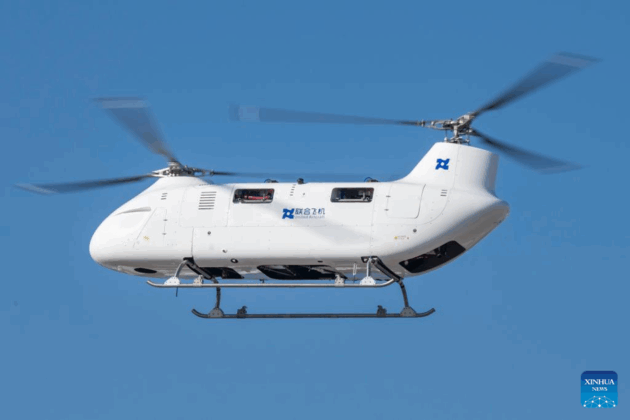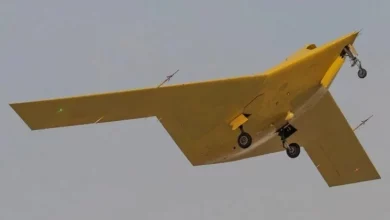China tests new tandem rotor drone helicopter

China has taken a new step in its unmanned aviation development with the successful maiden flight of the Boying T1400, a tandem rotor unmanned helicopter developed by United Aircraft.
The flight took place in Harbin, northeast China’s Heilongjiang Province, on October 30, 2025, according to Chinese state media outlet Xinhua.
The T1400 is an unmanned rotorcraft powered by a twin-engine configuration and built with a high-strength composite airframe. The aircraft is designed for extended endurance, heavy payload delivery, and all-weather multi-mission capability.
The helicopter’s debut flight marks a milestone for United Aircraft’s broader development of intelligent, unmanned rotorcraft solutions. The aircraft’s configuration, with its tandem dual-rotor system and reinforced airframe, supports higher lift and stability in a wide range of operational environments.
According to the manufacturer, the T1400 was built with an emphasis on intelligent autonomous operation, with onboard systems designed to handle dynamic flight environments and data-driven mission profiles. The aircraft’s modular design and large internal volume allow for integration of payloads including logistics modules, agricultural dispersal systems, or surveillance and communications gear.
Photos published by Xinhua show the T1400 in flight with clean aerodynamic lines, tandem main rotors, and a rugged skid-type landing gear. Logos on the airframe identify United Aircraft, the manufacturer, which has not yet disclosed production timelines or potential customers.
As China pushes to expand its influence in the unmanned aerial systems (UAS) market, aircraft like the T1400 highlight a growing focus on medium-to-heavy class unmanned rotorcraft. Such systems offer unique advantages over fixed-wing drones, particularly in vertical lift environments, narrow terrain corridors, or when operating without airstrips.
The emergence of systems like the Boying T1400 reinforces the need for U.S. and allied planners to monitor advancements in Chinese dual-use aviation platforms. Whether deployed in civilian or contested domains, long-endurance unmanned rotorcraft could alter how nations address mobility, supply chains, and surveillance across a range of environments.





